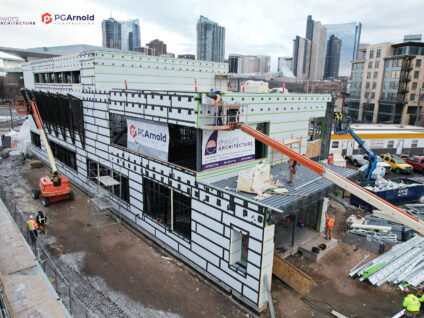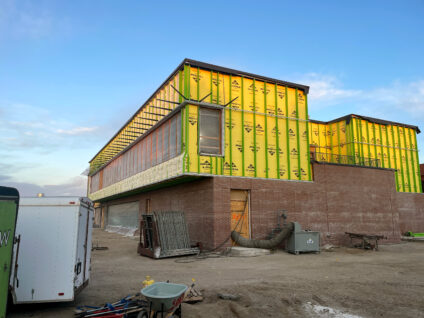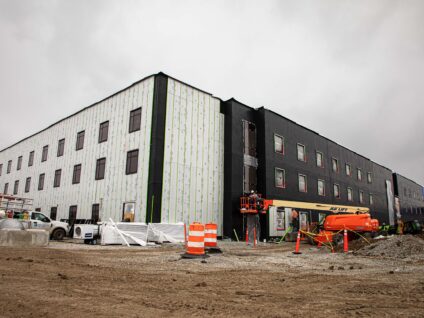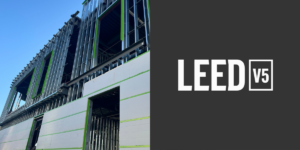ASHRAE 90.1 is a widely recognized energy standard for buildings and their systems. ASHRAE 90.1 – officially titled “Energy Standard for Buildings Except Low-Rise Residential Buildings” – establishes the minimum energy efficiency requirements for the construction and design of buildings, spanning components like the building envelope, HVAC systems, and more. The standard is critical in the building industry, serving as a baseline for both national and local energy codes, with thirty-eight states adopting a version of ASHRAE 90.1. Most building energy requirements in the country have been influenced in some form by ASHRAE 90.1.
The ASHRAE 90.1 standard extends beyond regulatory compliance, serving as a benchmark for energy conservation and influencing not only national but international building practices as well. The implementation of ASHRAE 90.1 leads to reduced energy consumption and greenhouse gas emissions from buildings. In creating and establishing stringent efficiency criteria, the standard supports the industry in progressing toward more sustainable construction and operational practices, ultimately contributing to environmental preservation and energy security. In totality, ASHRAE 90.1 is a keystone in mitigating environmental impact and enhancing building sustainability.
Recognizing Impact: Thermal Bridging
In the 2022 edition of the ASHRAE 90.1 standard, ASHRAE 90.1 now explicitly recognizes both linear and point thermal bridges, providing guidelines and performance requirements for mitigating thermal bridges.
-
Point Thermal Bridging
- Occurs at specific, localized points in buildings’ structures where a significant amount of heat can be transferred. These points usually involve penetrations or interruptions in the insulation layer, like bolts, stickpins, screws, or any form of fastening. Although concentrated, the heat transfer at these points can lead to dramatic energy losses.
-
Linear Thermal Bridging
- Refers to heat transfer along continuous lines at intersections of building assemblies, such as between walls and floors, walls and roofs, or around window and door frames. Unlike point bridging, which is localized, linear bridging extends across extensive areas of the building’s envelope and is more challenging to address due to the involvement of large structural components.
New calculation methods have been introduced to assess the impact of thermal bridging as well. There are specific performance requirements for mitigated thermal bridges. If a thermal bridge exceeds the mitigated value, it must be reduced unless an exception applies. Where linear and point thermal bridges occur, the standard states the necessity of adhering to applicable requirements (found in sections 5.5.5.1 through 5.5.5.5). The following thermal bridging impacts must be accounted for in the new ASHRAE 90.1-2022 standard.
- Roof and wall intersection
- Walls and intermediate floor intersections
- Exterior cladding support
- Opaque wall and vertical fenestration intersection
- Other elements and building assembly intersections
The explicit recognition is crucial, as it acknowledges the various ways thermal bridges can occur, and what their impact is on building performance and efficiency. The new methods for calculating the impact of thermal bridges consider such factors as the conductivity of materials and the geometry of building components, allowing for more attention and more accuracy in assessing thermal bridging.
Mitigating Thermal Bridging Through Strategic Window Design
ASHRAE 90.1 continues the callout by addressing the issue of windows and thermal bridging. ASHRAE 90.1-2022 specifies that for vertical fenestration, the outermost glazing layer shall be aligned within the thickness of or within 2″ (50mm) of either face of the continuous insulation layer. This addresses the integration of windows with the building’s insulation. The specification positions the window close to or on the plane of the insulation.
As awareness of thermal bridging in building envelopes grows, the need for effective mitigation strategies becomes increasingly critical. Fortunately, a variety of proven solutions are available to address and eliminate these energy losses. These solutions not only enhance building efficiency but also contribute to long-term sustainability and comfort.
Made to Support & Exceed: GreenGirt CMH XO™
GreenGirt CMH XO is a continuous insulation system for windows, combining structural composite metal hybrid sub-framing with compatible accessories and expert engineering support. Crafted with building codes in mind, it meets and exceeds energy standards such as ASHRAE 90.1-2022. Additionally, GreenGirt CMH XO effectively addresses the critical challenge of thermal loss at windows and openings. The system eliminates through-wall metal, through-insulation fasteners, conductive metal angles, and inefficient wood-blocking while allowing the thermal plane of the insulation and the window to align. Not only will GreenGirt CMH XO improve thermal efficiency, but the system bolsters structural integrity, contributing to a more sustainable and structurally sound envelope.
With the increasing stringency of energy efficiency codes like ASHRAE 90.1-22, there is not only a desire but a critical need for products that help meet and exceed these standards. GreenGirt CMH XO eliminates the need for through-wall or through-insulation fasteners. It also aligns the window’s thermal plane with the thermal plane of the insulation. GreenGirt CMH XO offers versatility and integrates seamlessly with various window types, delivering superior performance. By replacing traditional metal angles and wood blocking, the system ensures a highly efficient and sustainable construction approach.
Enhanced Envelope Efficiency: The Role of GreenGirt CMH™ in Meeting ASHRAE 90.1 Standards
Mitigating thermal bridging is crucial for optimizing building energy efficiency. The GreenGirt CMH continuous insulation system directly tackles this challenge. Its innovative composite metal hybrid Z-girt sub-framing eliminates thermal bridges, greatly improving the thermal efficiency of building envelopes. This system also aligns with ASHRAE 90.1 standards.
One standout feature is the integrated ThermaLock, which doubles as a retention spline. This ensures a continuous insulation layer by eliminating the need for through-insulation or metal-to-framing connections.
This not only simplifies installation but also maintains the insulation’s integrity and reduces potential thermal leaks. When using the GreenGirt CMH continuous insulation system, thermal bridging becomes a thing of the past. The system can eliminate the need for stickpins, fasteners, and virtually any other insulation retention device.
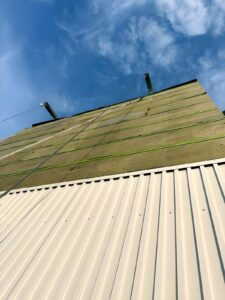
The system’s versatility allows for the use of various insulation materials, such as mineral wool or spray foam. This flexibility helps achieve high R-value efficiency, rated between 92–99%. Incorporating the GreenGirt CMH system enables building projects to meet, and even exceed, the stringent envelope performance criteria set by ASHRAE 90.1. This includes new “envelope back-stop” requirements, which ensure the building envelope contributes significantly to energy savings before adding mechanical systems.
This integration supports sustainable building practices and enhances occupant comfort. It aligns with global sustainability goals while providing substantial long-term energy and cost savings.
Envisioning the Future: Pioneering Energy Efficiency with GreenGirt CMH Systems
The updates in ASHRAE 90.1-2022 highlight a pivotal shift toward stricter energy efficiency standards, emphasizing a commitment to sustainable building practices. In this changing landscape, the GreenGirt CMH XO and GreenGirt CMH continuous insulation systems become essential tools for architects and builders. These systems help professionals not only meet but exceed these stringent requirements.
The GreenGirt CMH XO system specifically tackles thermal bridging at window interfaces. It provides the structural capacity to align window thermal planes with continuous insulation, drastically reducing energy loss and optimizing building performance. This innovative approach also ensures compliance with new “envelope back-stop” requirements in ASHRAE 90.1 by doubling thermal efficiency at windows.
To learn more about the new ASHRAE 90.1-2022 energy code, GreenGirt CMH XO, or GreenGirt CMH continuous insulation, please contact us today! We can also provide information on building enclosure systems!




